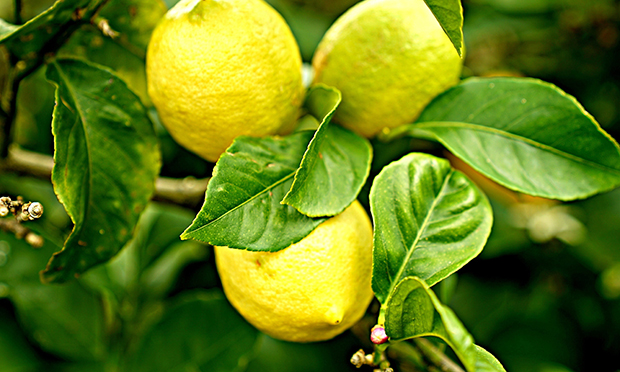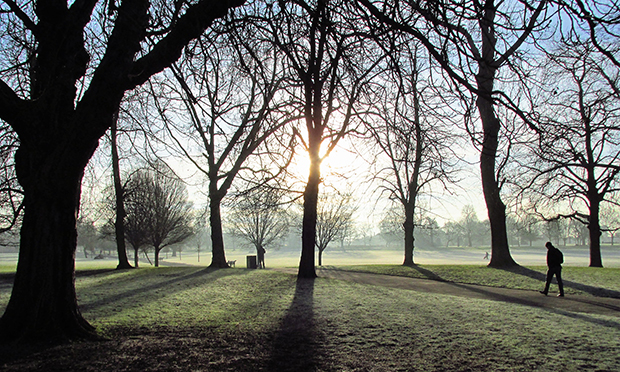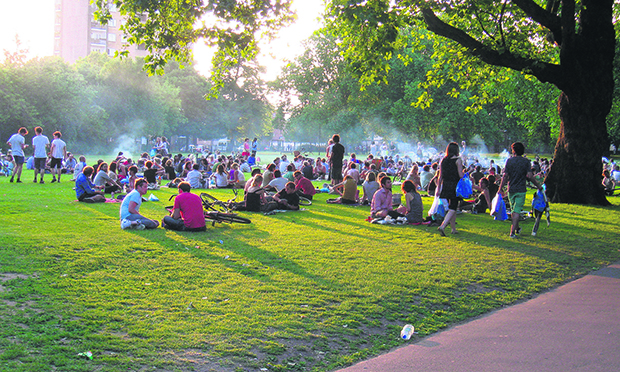The Citizen Gardener: ‘Many of our open spaces would not exist without campaigns or protests’

Twelve Miles from a Lemon
Eighteenth-century parson Rev Sydney Smith complained that he was 12 miles from a lemon when he was sent to a country parish. At that time lemons were considered essential to sophisticated eating.
Nowadays, we are unlikely to be much more than 12 metres from one and perhaps because they are so easy to come by, they are also easily wasted.
As lemons come into season I’ve had, coincidentally, several conversations about their uses and how to reduce waste so here are some tips I’ve collected over the last couple of weeks as well as how to grow your own.
Incidentally, citrus fruit have their own history in Hackney. Samuel Pepys used to come here to visit the houses and gardens, including Brooke House (now BSix) where he saw oranges growing on trees for the first time. No doubt there were lemons there, too.
Growing Lemons
Lemons are quite easy to grow as long as they don’t get too cold or wet (not below four degrees celsius at night) and the temperature needs to be constant. They are suitable for pots as they have shallow roots, so you can bring them inside in the winter but they need to be outside in the spring and summer to get pollinated.
When you bring them inside, make sure the room isn’t over centrally- heated (think of winter in their natural habitat in southern Europe). They can be grown from seed but remember that if you collect seeds from shop-bought lemons – like the giant American hybrid Ponderosa which you will see in supermarkets – they won’t come true.
The original lemons are Rough Lemons. The fruit are round, sweet and rough-skinned but not very tasty. Meyer is a popular hybrid with small rounded fruits and the Royal Horticultural Society recommends Garey’s Eureka.
If you try sowing a seed from an organic lemon, it’s more likely to come true. Sow the pips in compost in the spring. Place a plastic bag over the pot and leave in a warm, dark place, keeping the soil moist. They should germinate in a couple of weeks. When bigger, keep them in a sheltered site – against a sunny wall in rich compost with some sand added to keep the soil open.
When they start to fruit, don’t allow more than three or four to develop until they are established, but look forward to fruits starting to appear at this time of year. Depending on the temperature, they can flower most of the year.
Twenty-one Uses for Lemons
- Grate or peel a lemon before you squeeze it. This can be stored in a box in the freezer and you can easily take a bit out when you need it.
- Once zested and squeezed cut the halves into four and freeze. These skins can be added to cold drinks to act like ice cubes and add flavour.
- Leftover lemon skins can be used to make a fruit tea. Just pour boiling water over two or three pieces and leave to stand for a few minutes.
- The zest, pith and seeds are all high in pectin so if you’re making jam just add these along with regular granulated sugar and you’ll get a good set without the need for expensive jam sugar. If you add the pith or seeds just tie them in a clean cloth so they can be pulled out easily once they’ve done their job. You can also freeze the seeds.
- The skin contains oil which, when dried, can be use as kindling to start fires!
- We’ve been told not to put citrus into compost as it’s too acidic for the microbes, but you can let your lemons go mouldy to reduce the acidity.
- Put a squeezed lemon in your dishwasher to make glass shine.
- Rub your hands with a cut lemon to remove stains or onion smells.
- Candy the peel.
- Preserved Moroccan lemons: Stud lemons with 10-12 cloves. Pack into large jars and pour over olive oil. Seal and leave for two months.
- Turn cream into sour cream by adding 10ml of juice.
- Lemon juice added to the water when boiling eggs prevents them from cracking.
- Dried lemon skin hung in sachets amongst your clothes can help deter moths (though our London moths seem to be indestructible).
- Sooth headaches by soaking a compress in lemon juice and applying to the temples.
- Lemon juice added to a wound will act as a disinfectant.
- Freeze slices plain or with sugar: line trays with greaseproof paper and space the slices on trays. Freeze until hard then put into rigid containers. They’ll last for a year.
- Hand lotion: mix equal parts of lemon juice, glycerine (from a chemist) and rose water.
- Use as a cure for scurvy!
- Lemons are high in vitamin C so a honey and lemon drink can give you a boost when you have a cold. I’ve found that drying lemon skin on a radiator makes the room smell great!
- Homemade candied lemon is a delicious and traditional festive treat. Plenty of recipes online, and you can even add them to a Christmas pudding or mince pie.
Thanks to Susan from the 10xGreener group and Fatima Tarkleman for their tips.

Recognising campaigners
The council is asking for name suggestions for roads, buildings and parks which are inspired by local heroes, hidden histories and values of equality and anti-racism.
There are some great suggestions already, so I’ve been thinking of environmentalists or movements that might be included.
Hackney used to have great gardens, including a physics garden near the site of Homerton hospital, which is apt. One of the botanists there who became physician to James I was Flemish man Matthias de L’Obel or Lobel (1538–1616). The lobelia is named after him. I know he is another old white bloke so here are other ideas.
Hackney Downs was saved as common land by protestors in the 19th century.
The Lido was saved by local residents in the 90s. Victoria Park was established following a petition of 30,000 local people to the Queen. Wick Woodland was created as compensation for the M11 link road which caused huge protests in east London in the 90s. The grounds of Clissold House were saved from development by campaigners and then become Clissold Park.

Even London Fields was threatened with development in the 1860s – much of it already lost to building.
Road schemes are causing quite a lot of anxiety at the moment but in the 70s there were major Greater London Council plans to build several motorways through and around London – the ringways (The Westway is one of the few vestiges of this scheme). One route was planned from Harleston to Hackney Wick and would have destroyed large parts of the borough, at that time apparently dispensable, with a six- lane road. Hundreds of protest groups across London helped stop this. I was speaking to someone involved recently. If only I could remember who it was!
Fanny Wilkinson is credited with being the first female landscape architect. She designed many public squares, including St Thomas’s Recreation Ground on Mare Street. She worked as a landscape designer for a society which aimed to ‘bring beauty to the lives of the poor’. She was also one of the founding members of the Women’s Agricultural and Horticultural International Union in 1899 because she was concerned about the lack of education and employment opportunities for women working on the land.
The council often makes much of how many open spaces we have, but many of them would not exist without campaigns and protests to save or create them for the community. I think they deserve to be recognised.
Kate Poland is an award-winning community gardener and the UK’s first ever postcode gardener in E5. For more, head to cordwainersgrow.org.uk and friendsoftheearth.uk
